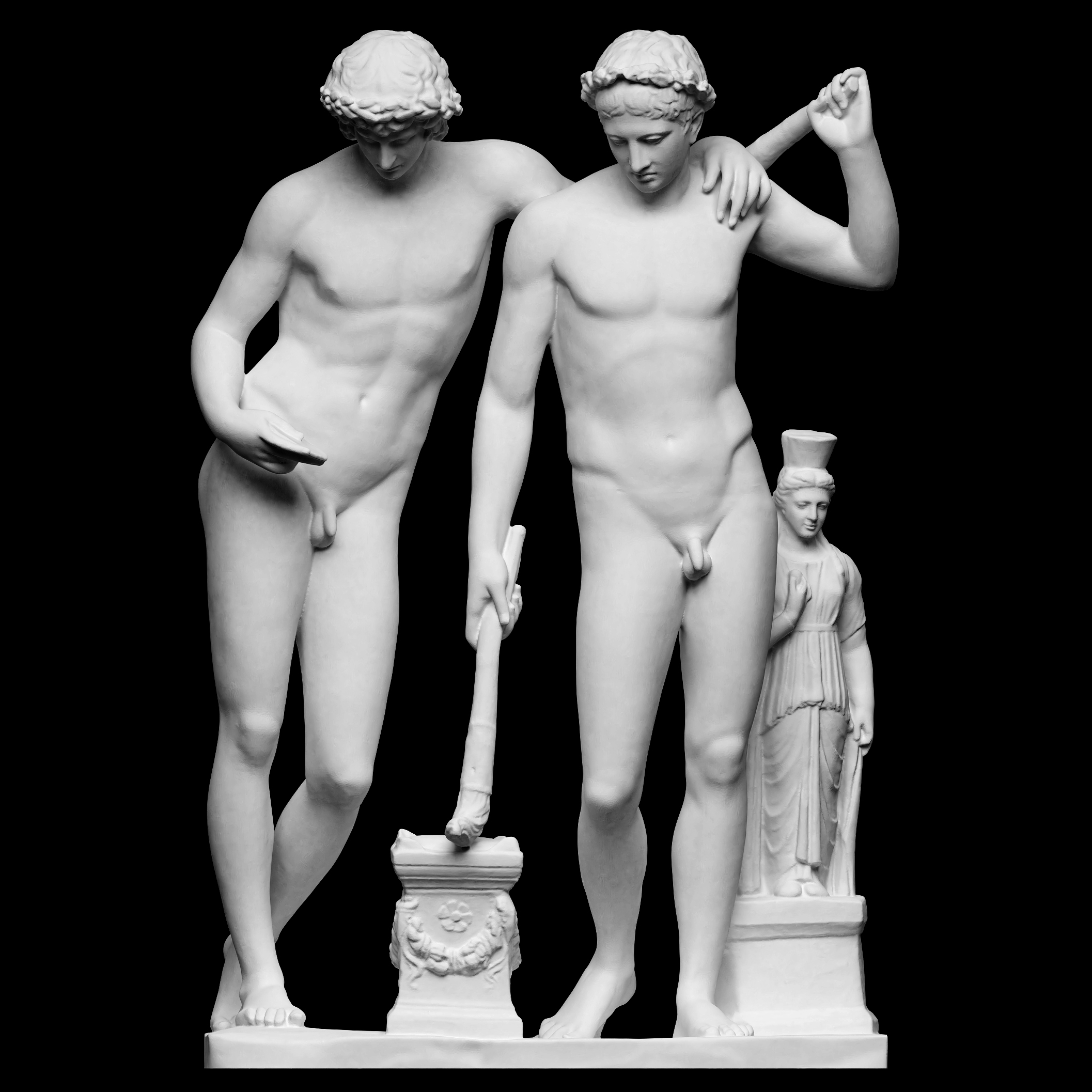
Castor and Pollux, The "San Ildefonso Group"
myminifactory
The Castor and Pollux group, alternatively referred to as the San Ildefonso Group after its former location at La Granja Palace in Segovia, Spain, is an ancient Roman sculptural ensemble dating back to the 1st century AD. This sculpture showcases a unique blend of neo-Attic eclecticism, making it one of the most outstanding examples of its kind. A scan of the plaster cast housed at The Museo del Prado in Madrid reveals two idealized nude youths, both adorned with laurel wreaths, who appear to be leaning against each other. To their left stands a small female figure, commonly interpreted as a statue of a divine female, holding a sphere that can be seen as either an egg or pomegranate. The identities of the figures have been subject to intense debate but are now widely accepted as representing Castor and Pollux. The original discovery found the lefthand figure missing its head, which was later restored in the 17th century by Ippolito Buzzi for Cardinal Ludovico Ludovisi's collection. A Hadrianic-era bust of Antinous from another statue served as a reference point for this restoration. Throughout the 17th and 18th centuries, various theories emerged regarding the identities of the figures. In the 19th century, it was suggested that the sculpture depicted "Antinous and Hadrian's genius," likely in an attempt to downplay their youthful appearance. This theory, however, is now considered inaccurate due to its historical inconsistencies. Other proposed identifications included "Antinous and a sacrificial daemon" and simply "Andinous and Hadrian pledging their fidelity." These interpretations have since been discredited as the result of the figure's restoration as Antinous. The group is now widely accepted as representing Castor and Pollux, offering a sacrifice to Persephone. This identification is based on the right-hand figure, who holds two torches, one downturned and the other upturned, as well as the woman's sphere being interpreted as an egg, similar to that from which the Dioscuri were born. This interpretation was supported by Goethe, who owned a cast of the group. Castor and Pollux are twin brothers in Greek and Roman mythology, known collectively as the Dioscuri or Dioskouroi. Their mother is Leda, but they have different fathers; Castor is the mortal son of Tyndareus, while Pollux is the divine son of Zeus. In Latin, the twins are also referred to as the Gemini or Castores. When Castor was killed, Pollux asked Zeus to allow him to share his immortality with his twin, and they were transformed into the constellation Gemini. The pair are revered as patrons of sailors, who appear to them as St. Elmo's fire, and are also associated with horsemanship.
With this file you will be able to print Castor and Pollux, The "San Ildefonso Group" with your 3D printer. Click on the button and save the file on your computer to work, edit or customize your design. You can also find more 3D designs for printers on Castor and Pollux, The "San Ildefonso Group".
